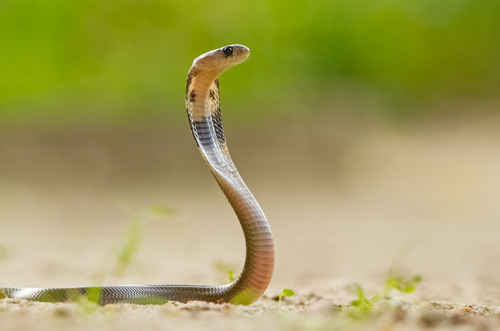
Indian Cobra
The Indian cobra, Naja naja, is iconic for its hood and striking pattern. A masterful rodent hunter, it thrives in varied habitats, from forests to urban landscapes. This revered snake holds cultural significance and plays a vital ecological role by controlling pest populations.
32 years
Lifespan
Length: 1.2192 - 2.1336 m
Size
Brown, Yellow, Black, White
Color
Medium
Aggression
Least Concern
Conservation Status
Stable
Population Trend
Characteristics
The Indian cobra, Naja naja, is found in the Indian subcontinent and is known for its distinctive hood and potent venom. It inhabits forests, plains, and urban areas, often near water. It plays a crucial role in controlling rodent populations and is revered in Indian culture.
Distribution Range of the Indian Cobra
Naja naja, commonly known as the Indian cobra, is native to South Asia. Its geographical distribution includes countries such as India, Pakistan, Bangladesh, Sri Lanka, and Nepal. It can also be found in parts of Bhutan and occasionally in southern China.
Indian Cobra's Habitat
Environmental Conditions
The Indian cobra inhabits a variety of environments, including tropical and subtropical forests, agricultural fields, dense and open forests, plains, and even urban areas. It is adaptable to diverse environmental conditions, often found in both moist and dry regions.
Ecological Niche
Naja naja plays a crucial role as both predator and prey in its ecosystem. It primarily preys on rodents, birds, and other small animals, helping to control their populations. The cobra is also an important prey species for larger predators. It often resides in burrows, tree hollows, and other secluded areas, which provide shelter and hunting grounds.
Copyright @ Nature Style Limited. All Rights Reserved.
 English
English